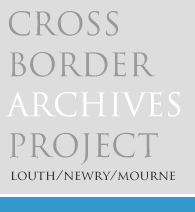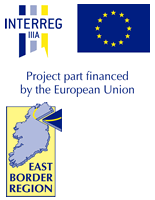Great Northern Railway
Social impact of GNR
The railways in Ireland reached their zenith during the early part of the 20th century. People had few alternative modes of transport at that time. Indeed, in the late 19th and early 20th centuries most Irish folk grew up, worked, married, raised families and died within a 20 mile radius of their home.
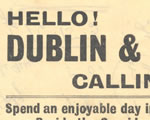
Leaflet advertising day trips
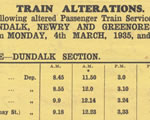
Leaflet regarding train times
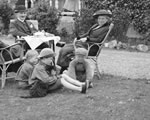
Greenore Hotel 1915
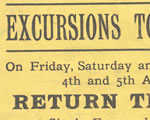
Leaflet advertising excursions
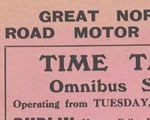
Time-table of GNR omnibus service
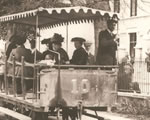
Tramcar No. 10
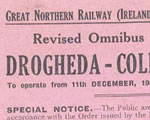
Time-table of GNR omnibus service
The coming of the railways completely revolutionised this pattern of living. Railways linked communities throughout the country and gave people an opportunity to escape the bounds of their immediate locale. But the railways did much more than enable huge numbers of people to move quickly and easily. They changed people's perceptions of the wider Irish society; they hastened the speed at which goods and news could travel and they helped to cement relationships between widely disparate people and communities. As a result, railway stations became important social meeting points, the scene of heartfelt hellos and poignant good-byes.
Day trips
Railway services such as those of the GNR introduced the masses to excursions - day trips to Gaelic Football matches, seaside holiday resorts, tours and day excursions to Dublin all gained in popularity. However, following World War II, the growth in the number of motor vehicles on Irish roads brought rail supremacy to an end.
There were further challenges to the dominance of rail. In 1947 Aer Lingus introduced flights from Dublin to Belfast. GNR's response was to introduce the Enterprise service, which completed the journey in just over two hours. However, nationalisation and under-investment undermined the profitability and competitiveness of the GNR, and, with the Northern and Southern Irish governments unwilling to keep the railway open, the bulk of its lines closed, with the exception of the Dublin – Belfast Enterprise.
Did you know?
When Butlin's opened Mosney in 1948, the GNR created a purpose-built railway station to serve it. The station continued until it was closed in 2001.
Next page - Engineering Pride » « Previous page - History of the GNR
- home |
- about project |
- online catalogue |
- online exhibitions |
- activities |
- oral history collection
- about us |
- contact us |
- legal |
- acknowledgements
© Cross Border Archives Project . Website design and development by morsolutions.
This project is part financed by the European Union through the Interreg IIIA Programme managed for the Special EU Programmes Body by the East Border Region Interreg IIIA Partnership.
